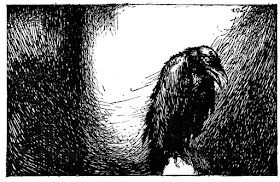 |
| Copyright: "Yowie Statue at Kilcoy, Queensland," by Seo75 (wikimedia). |
When the Europeans first arrived in Australia, they encountered “the
hairy man,” of Aboriginal myth. According to the Aboriginal Australians,
humans share this continent with apemen. These Yowies (“hairy men”), as
they were called, had inhabited Australia before the coming of any
humans.
Amongst the Aboriginal Australians, the “hairy men” were called many names and possessed different attributes. “
Yowie,” the name They are called today comes from “
Yuwi” as referred to by the Yuwaalaraay People of New South Wales. To them, Yowie is a spirit from Dreamtime. Meanwhile, the “
Yaroma”
of the Blue Mountains was a cannibal. According to the Gundungurra
People, the Yaroma sharpened their long fangs on rocks. A human could
escape from this cannibal by jumping into a waterhole, since the Yaroma
could not get their feet wet. Other myths describe Yowies to be gigantic
“hairy men,” with muscular bodies and powerful arms.
According to cryptozoologists who study apemen, there are at least two different kinds of Yowies. The “hairy men,” known as “
Jimbra” of Western Australia, “
Turramulli”
of Cape York, and
"Lo-an” of Victoria are probably “True
Giants.” (These are large hairy hominoids who leave long, four-toed foot
prints.) They are classified as True Giants since they are tall and
have flat faces. “
Tjangara, the “Great Hairy of Man” of South
Australia is also a True Giant. This apeman carries a club to kill and
eat humans. Meanwhile, the Yowies of New South Wales are an unknown
species of ape. They have long canine teeth over wide mouths. Also,
these Yowies also possess very apelike feet, with a large second toe,
and a big toe jutting out at an angle.
According to the Aboriginal Australians, Yowies have lived in
Australia long before the coming of people. Bigger and faster than
humans, Yowies waged war against the newcomers. Since the humans had
better weapons, they pushed the Yowies into more remote areas of
Australia. In Cape York, the Yalanji People banded together and killed
all of the Turramulli.
As early as 1795, settlers on a hunting trip at Yowie Bay spotted a
“hairy man” running away from them. In fact, Yowie Bay is reported to be
named for the numerous sightings of Yowies. During 1994, Tim the Yowie
Man saw his first Yowie in the Brindabella Mountains. He had reported
encountering a hairy ape-like animal whilst on a field trip. Meanwhile,
the people of Kilcoy in Queensland say that Yowies still live in the
surrounding mountains.
Most Yowie researchers agree that Yowies are not close relatives of
humans. The “Father of Yowie Research” and founder of the Australian
Yowie Research Centre (AYR), Rex Gilroy thinks that one kind of Yowie is
possibly an Australopithecine, a large robust relative of early humans,
Homo habilis and
ergaster. Others at the AYR posit that
Gigantopithecus could be the True Giant Yowie. This strong, enormous and human-like ape lived in Asia alongside
Homo erectus. Both could still be living in Australia.
The Aboriginal stories of Yowies speak of an inhabited land before
humans. Like any other group of indwellers, the Yowies wanted the
newcomers gone. Although, They lost the war, the tenacious Yowies still
continue to live in their homelands. Even today, people still see Them
in settled places such as Sydney. The Yowies never left, and instead
learnt to avoid direct contact with humans.
Yowies teach people about tenacity. Because of their perseverance,
Yowies survived. Defeated by the humans, They moved to the inaccessible
parts of their homelands, and stayed. If you want help to remain in your
home, look to the Yowie. But try to learn to co-exist with others.

